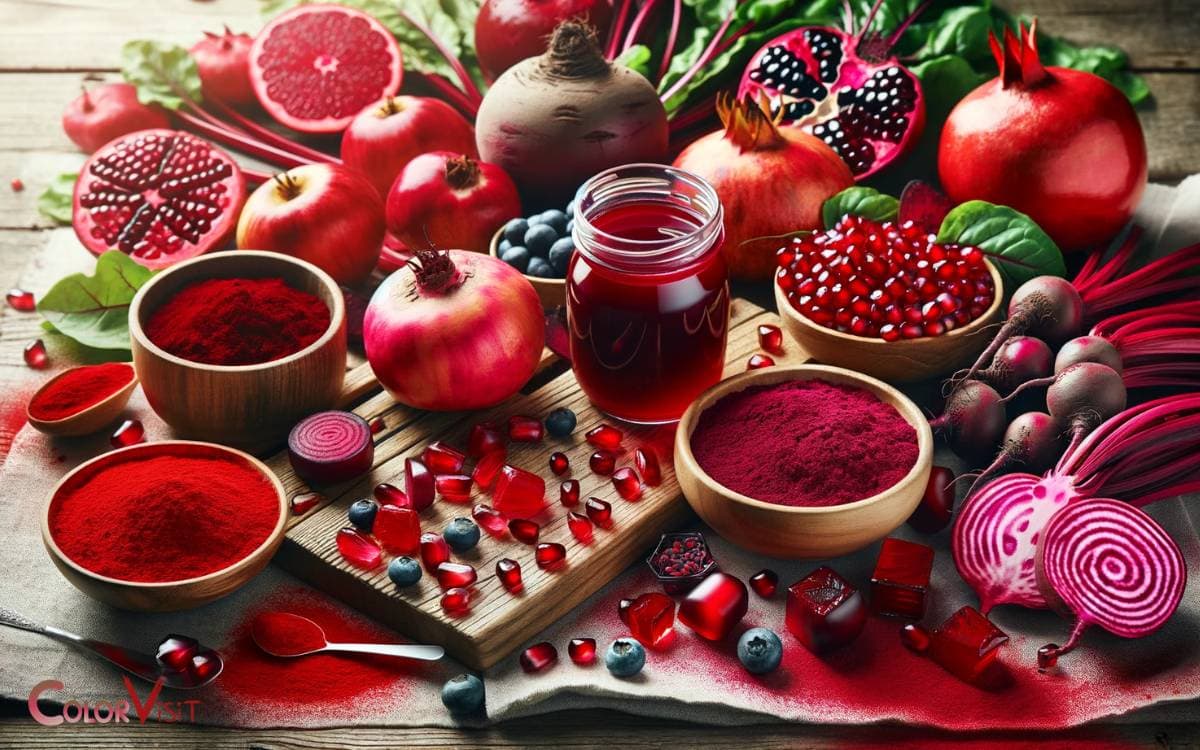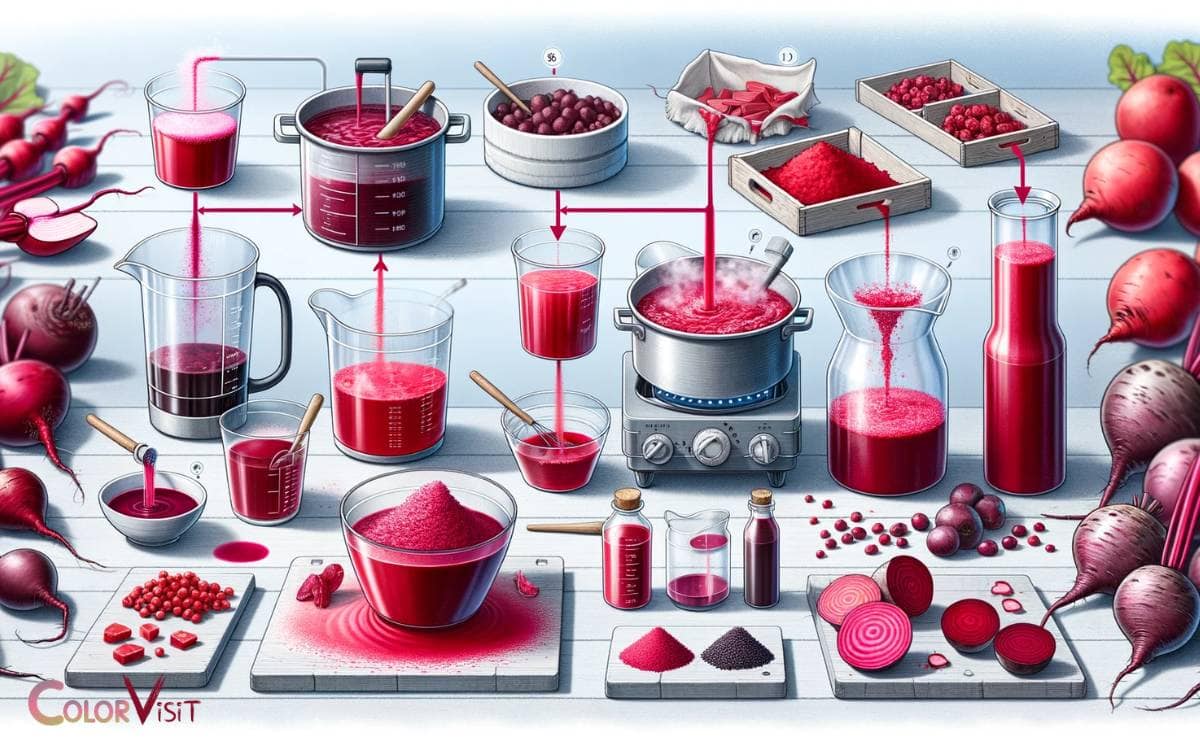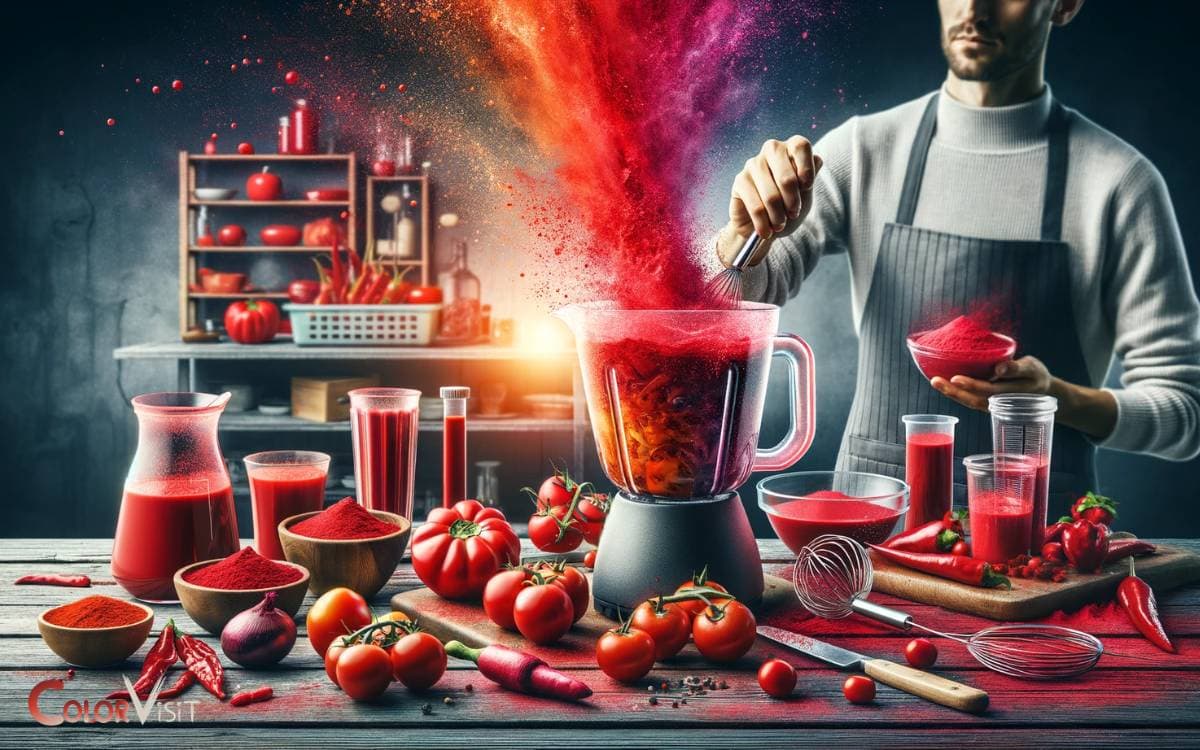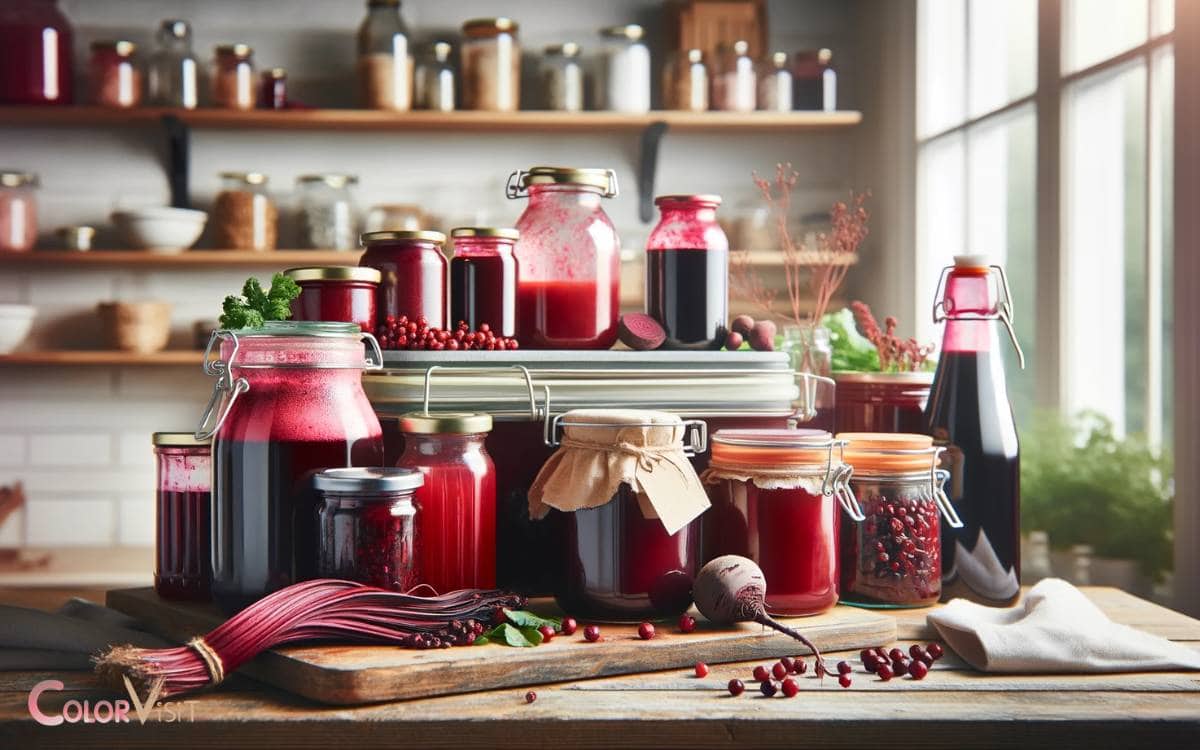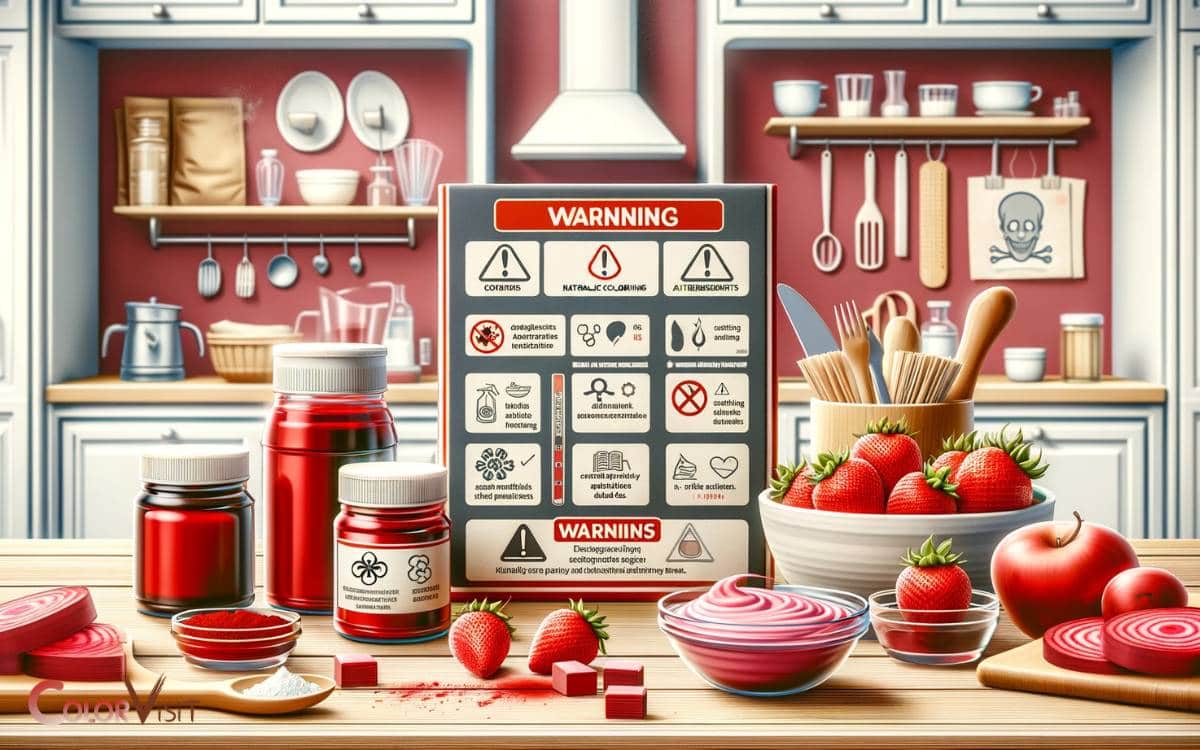How to Make Natural Red Food Coloring? Proven Guide!
Creating natural red food coloring can be achieved using ingredients such as beets, red berries, and pomegranates.
The process involves extracting the color from the natural source and then straining it to obtain a concentrated dye that can be used in various food applications.
Here’s how you can make it:
Crafting your own natural red food coloring is not only eco-friendly but also adds a personal touch to your culinary creations, ensuring your dishes are free of synthetic dyes.
Key Takeaway
Benefits of Natural Red Food Coloring
The benefits of natural red food coloring can be attributed to both its health and environmental advantages.
- Unlike artificial food coloring, natural red food coloring is derived from fruits and vegetables such as beets, pomegranates, and strawberries.
- These natural sources contain antioxidants and phytonutrients, which can have potential health benefits when consumed.
- Additionally, natural red food coloring eliminates the need for synthetic dyes, which are derived from petrochemicals and can have detrimental effects on the environment.
- By opting for natural red food coloring, the food industry can reduce its ecological footprint and contribute to sustainable practices.
This shift towards natural alternatives aligns with the increasing consumer demand for clean label products and demonstrates a commitment to innovation in the food industry.
Common Ingredients for DIY Red Coloring
Derived from fruits and vegetables such as beets, pomegranates, and strawberries, common ingredients for DIY red coloring offer a natural and sustainable alternative to synthetic dyes.
The following are some common ingredients for making natural red food coloring:
- Beets: Beetroot is a popular choice for creating a deep red color due to its natural pigment, betacyanin.
- Pomegranates: The deep red seeds of pomegranates can be used to create a rich and bright red coloring.
- Strawberries: This fruit can impart a natural red hue and a hint of sweetness to the coloring, making it a versatile option for various applications.
Methods for Extracting Red Pigments
In the process of making natural red food coloring, the extraction of red pigments can be achieved through different methods.
Beet juice extraction involves pressing or juicing beets to obtain the red pigment present in the vegetable.
Pomegranate skin infusion and cherries and berries maceration are also effective methods for extracting red pigments, each offering unique properties and concentrations of natural coloring agents.
Beet Juice Extraction
An efficient method for extracting red pigments from beets involves utilizing a high-pressure juicer to obtain a concentrated beet juice. This method ensures a higher yield of red pigments compared to traditional juicing methods.
The high-pressure juicer works by applying immense force to break down the beet cells, releasing a higher concentration of red pigments into the juice.
The following steps outline the extraction process:
- Preparation: Wash and peel the beets before cutting them into smaller pieces to facilitate the juicing process.
- Juicing: Feed the beet pieces into the high-pressure juicer, allowing it to extract the concentrated beet juice rich in red pigments.
- Collection: Collect the extracted beet juice and store it in a suitable container for further processing into natural red food coloring.
Pomegranate Skin Infusion
Pomegranate skins can be utilized as a source of red pigments through a process of infusion.
- To extract red pigments from pomegranate skins, start by collecting a handful of fresh pomegranate skins.
- Next, gently wash the skins to remove any debris or residue. Then, place the skins in a pot and cover them with boiling water.
- Allow the skins to steep in the hot water for several hours, or preferably overnight, to release the red pigments.
- After infusion, the resulting liquid can be strained to remove the solid particles, leaving behind a natural red dye.
This method harnesses the pigment-rich compounds present in pomegranate skins, offering a sustainable and natural alternative for obtaining red food coloring.
Cherries and Berries Maceration
Utilize the method of maceration to extract red pigments from cherries and berries, providing a natural source for creating red food coloring.
This process involves soaking the fruit in a solvent, such as water or alcohol, to draw out the pigments and flavor compounds.
Here’s how to do it:
- Choose ripe cherries or berries and crush them to release the juices and pigments.
- Place the crushed fruit in a container and cover it with a solvent, ensuring that the fruit is fully submerged.
- Allow the mixture to macerate for several days, stirring occasionally to enhance pigment extraction.
Maceration is an effective method for obtaining vibrant red pigments from cherries and berries, which can be used as a natural alternative to synthetic food coloring.
Blending Techniques for Intensity
When blending natural ingredients for red food coloring, it is essential to carefully adjust the proportions to achieve the desired intensity. Blending techniques play a crucial role in determining the final color strength.
- To intensify the red hue, consider using a combination of different red-pigmented fruits or vegetables such as beets, pomegranates, or raspberries.
- Experiment with various blending methods such as maceration, juicing, or pureeing to extract the maximum color.
- Maceration, for instance, involves soaking the ingredients in a liquid to release their pigments.
- Additionally, incorporating acidic components like lemon juice can help enhance the brightness of the red color.
When using heat to process the ingredients, be mindful that prolonged exposure can degrade the color intensity, so opt for gentle heating methods.
Storing and Preserving Homemade Red Dye
To maintain the longevity of homemade red dye, it is essential to store it in air-tight containers, which will prevent exposure to air and moisture.
Additionally, refrigeration is crucial to prevent spoilage and maintain the dye’s vibrant color. It is important to avoid exposure to sunlight, as UV rays can degrade the natural pigments and compromise the quality of the dye.
Air-Tight Containers for Longevity
An airtight container is essential for preserving the homemade red dye and extending its shelf life.
When storing and preserving natural red food coloring, it is important to use the appropriate containers to maintain its quality and potency over time.
Here are some recommended airtight containers for longevity:
- Glass Jars with Rubber Seals: These jars provide a tight seal to prevent air and moisture from entering, keeping the red dye fresh for longer periods.
- BPA-Free Plastic Containers: Look for containers specifically designed to be airtight and made from BPA-free materials to ensure the dye remains uncontaminated.
- Vacuum-Sealed Bags: Using a vacuum sealer to remove air from the bags before sealing can significantly prolong the shelf life of the homemade red dye.
Proper storage in these airtight containers will help preserve the natural red food coloring for future use.
Refrigeration to Prevent Spoilage
Properly storing and preserving homemade red dye requires refrigeration to prevent spoilage and maintain its quality and potency over time.
- Using an airtight container, as discussed previously, will help ensure the longevity of the natural red food coloring when refrigerated consistently.
- Refrigeration slows down the growth of microorganisms, preserving the dye’s freshness.
- It is important to store the dye at a consistent temperature, ideally between 35-40°F (1.6-4.4°C), to maintain its stability.
- When refrigerated, the homemade red dye can last for several weeks, maintaining its vibrant color and effectiveness.
- This method not only prevents spoilage but also helps retain the dye’s natural properties.
However, it is crucial to avoid exposure to sunlight, as this can degrade the dye. Now, let’s delve into the importance of protecting the dye from sunlight.
Avoid Exposure to Sunlight
When storing and preserving homemade red dye, it is essential to shield it from exposure to sunlight to maintain its color and effectiveness.
Sunlight can cause the degradation of natural pigments, leading to a loss of vibrancy and potency in the dye.
To avoid this, follow these guidelines for optimal storage:
- Use Dark, Opaque Containers: Store the red dye in dark, opaque containers to prevent sunlight from penetrating and affecting the color quality.
- Cool, Dark Storage: Keep the dye in a cool, dark place, such as a pantry or cupboard, away from direct sunlight and heat sources.
- Refrigeration: If possible, refrigerate the dye to further protect it from light and extend its shelf life.
By following these storage practices, the homemade red dye can retain its vibrant color and efficacy for an extended period.
Application Tips for Culinary and Crafts
Using natural red food coloring can enhance the visual appeal of a wide range of dishes and DIY projects.
- When using natural red food coloring in culinary applications, start with small amounts and gradually increase to achieve the desired hue, as the color may intensify over time.
- It’s important to note that natural red food coloring may not withstand high temperatures, so it’s best used in dishes that don’t require extensive heating.
- In crafts, natural red food coloring can be used in various DIY projects such as homemade playdough, colored pasta necklaces, or even natural dyeing of fabrics.
When incorporating it into craft projects, consider experimenting with different mediums and concentrations to achieve the desired shades.
Safety Precautions and Allergen Information
To ensure the safe use of natural red food coloring in culinary and crafts, it is essential to be mindful of potential allergens and to follow safety precautions.
When working with natural red food coloring, consider the following safety measures:
- Allergen Information: Always check for potential allergens present in natural red food coloring ingredients, such as fruits like strawberries or cherries, which may trigger allergic reactions in some individuals.
- Handling and Storage: Store natural red food coloring in airtight containers away from direct sunlight and heat. Use gloves when handling concentrated colorants to prevent skin irritation.
- Labeling: Clearly label homemade natural red food coloring with the date of preparation and ingredients used to ensure awareness of any potential allergens and to track its shelf life.
Conclusion
Natural red food coloring offers a healthier and environmentally friendly alternative to synthetic options. By utilizing common ingredients and extraction methods, individuals can create vibrant red pigments for culinary and craft applications.
It is important to store and preserve homemade dye properly, and to exercise caution with potential allergens.
The use of natural red food coloring can evoke a sense of nostalgia and comfort, as it harkens back to traditional methods of food preparation and creativity.


